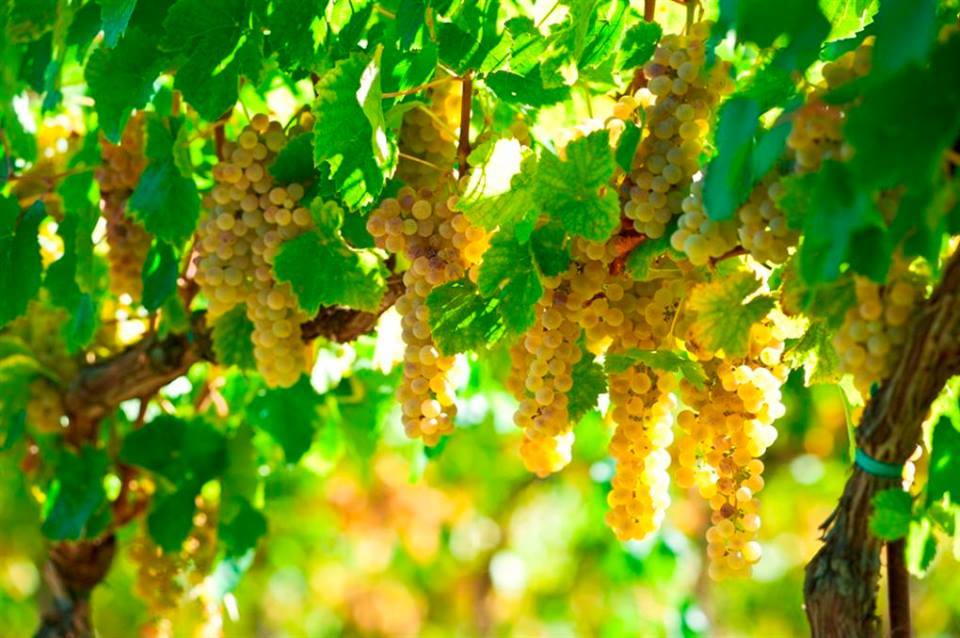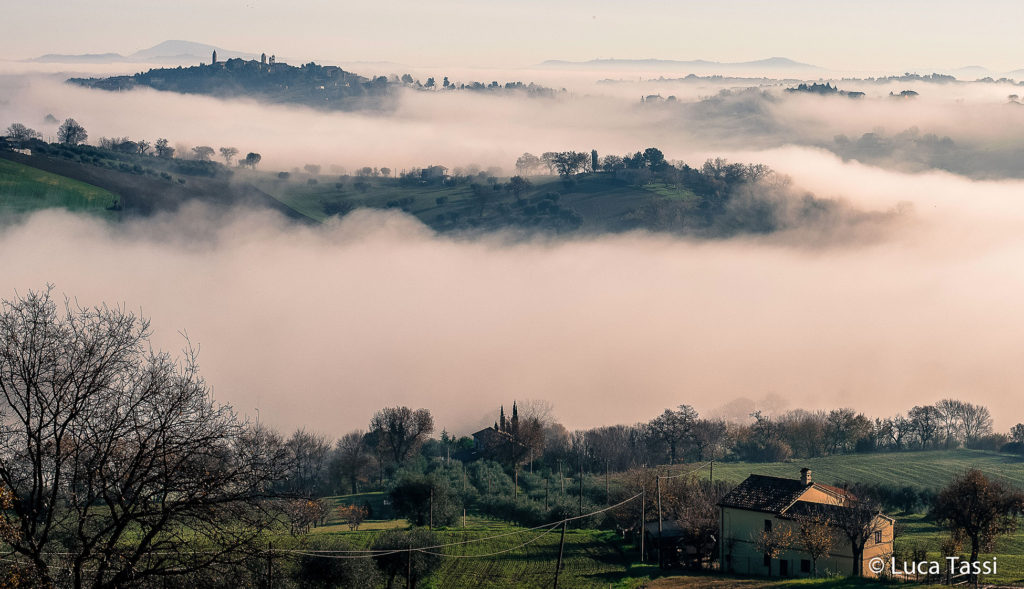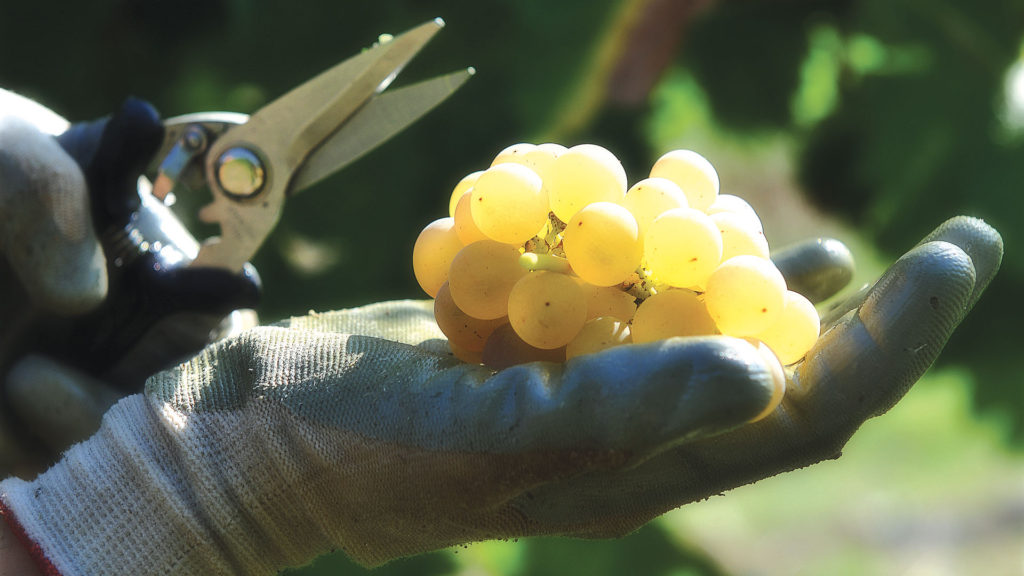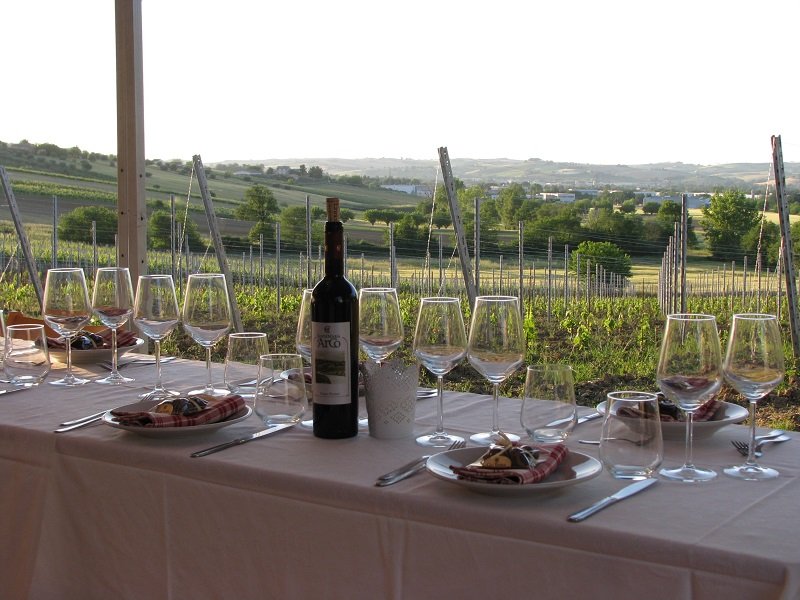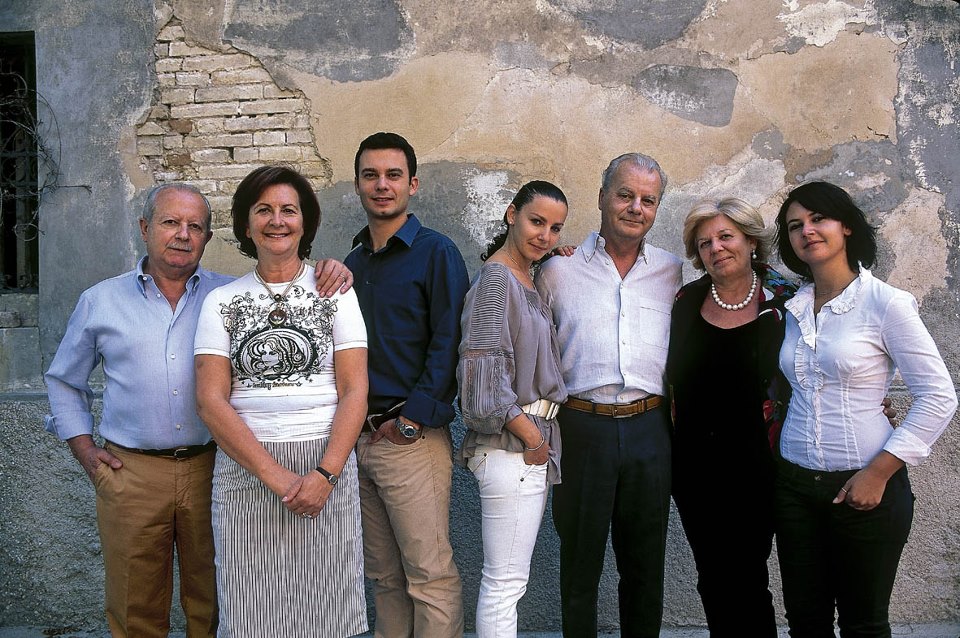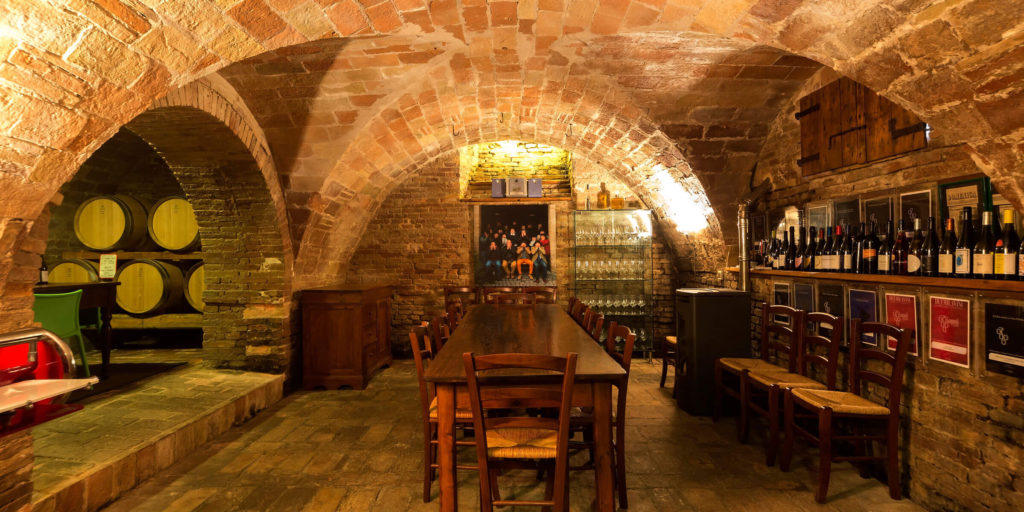Somewhere amongst the ancient ruins of Rome lives Italy’s tireless champion of wine whose calling card reads – Dr. Ian D’Agata Scientific Director VinItaly International. Something of a wine encyclopedia, and a breathing piece of Italian indigenous viticulture, Dr. Ian D’Agata enthusiastically enlightens like an open book, a rarity, even in today’s modern world.
In collaboration with Collisioni (Agrirock festival), IMT, and Dr. D’Agata our illustrious tour guide, we travel to the spiritual home of of Italy’s noble native white varietal Verdicchio and supporting co-stars of Marche – Conero Riserva DOCG, Lacrima di Morro d’Alba, Vernacchia di Serrapetrona, Bianchello del Metauro, Pergola and Colli Maceratesi spanning over 5 DOCGs, 15 DOCs, and 1 IGT. It is a wine region to be taken seriously, not just because the founder of one of America’s most famous wine dynasties, Cesare Mondavi was born here.
Almond scented Verdicchio with all it’s synonyms, including Verzana, Verdetto, Verdone, and Verzello have been flourishing in Marche at least since the invention of the printing press. The printing press was invented around 1440 by the German goldsmith Gutenberg following the fall of the Byzantime empire to the Ottoman turks. This propelled momentum for new trade routes which subsequently lead to global mapping of the world.
Like Burgundy is dedicated to Pinot Noir and Mosel to Riesling, Verdicchio is predominantly cultivated in Marche’s two principal DOC towns Jesi and Matelica. While Verdicchio dei Castelli di Jesi 2,762 ha vineyards are planted on low-lying hills of limestone, clay, and calcareous soils, enjoys temperate climate with maritime influence from the calm Adriatic sea, transcending softly scented, floral renditions. Verdicchio di Matelica hugging Umbria and cradled by the snow-capped Apennine ranges, that oddly run north – south, stretched between Macerata and Ancona provinces, at lofty altitudes of up to 400m, boast mineral-rich, calcerous clay soils on 300 ha vineyards.
A late-ripener, Verdicchio arguably is Italy’s greatest native white grape variety, which is characterized by:
High concentration of tartaric acids, which keeps the wine alive by warding off infections and contributing fresh and crisp flavors. Much like Chenin, Versatile Verdicchio presents itself in many forms; snappy sparkling wines, simple every day beauties, serious oaked Riservas, rich passitos, and late harvest gems. Yes, there is a Verdicchio for every palate.
Incredible adaptability to diverse terroir: Versatile Verdicchio from Castelli del Jesi is cocooned by the Adriatic sea that dances like a dainty, nimble ballerina, light on it’s feet, and approachable in it’s youth. While the voluptuous siren of Matelica, swathe by the mountains, is richer in expression, producing sensational wines with immense aging potential.
Even Sherlock Holmes’ skills may fall short when it comes to deciphering Italian labels. Both Verdicchio dei Castelli di Jesi and Verdicchio di Matellica requires a minimum 85% Verdicchio for the wines, though the better producers tend to make 100% pure varietal wines. Classico, Classico Superiore, and Reserva are the principle classifications with distinctions for aging and alcohol levels. The tricky part lies in the sugar content. Susceptible to botrytis, it can be a wonderful thing, or not, depending on what’s in your plate. Now as much as I savor this mystical mold’s seductive gingery, honey, mandarin marmalade goodness, if I am about to enjoy a plate of ceviche or crudo, I am looking for a light and zippy bright wine. Chances are I will stick with Classico since both Superiore or Reserva, depending on harvest picking, more than likely are affected by the prized noble rot.
It takes a village to raise a child, in this case the Insituto Marchigiano di Tutela Vini with it’s extended family of 700 producers and counting. It is not only intimately involved and dedicated to producing world-class wines, but they have invested over 13 Million Euros in technology advancements, restructuring wine cellars, marketing promotions, and economic incentives, in turn encouraging the younger generation. Case and point – founded in 1999 with only 19 producers, today IMT boasts over 700 producers.
Verdicchio’s hallmark mouth-watering acidity and mouth-coating richness much like Alsace Pinot Gris garners it an ideal contender for food pairings. It marries effortlessly with the sensational seafood that comes from the spectacular Adriatic coast, glorious platters of fresh fritto including the regional stuffed Ascoli olives, salty sweetness of the local Carpenega ham, wild game encased with local green herbs, even elevate white meat, spicy pecorino or king of Italian cheeses Parmesan Reggiano. I can see Verdicchio with whispers of residual sugar hold it’s ground to the exotic spices and flavors of South East Asian dishes too. Check out our gastronomical extravaganza here.
Our wine motely crew comprising of industry’s top professionals and journalists succumbed to a 3-day daunting yet delightful marathon of guided tastings to explore the indisputable versatility and longevity of Verdicchio, including an spectacular line up of vintage Verdicchio’s dating back to 1991. There are a handsome amount of truly great Verdicchios, so singling out a few is anything but satisfying. Listed in no particular order are the producers from Jesi and Matelica, with one common denominator – they all produce a kaleidoscope of riveting flavors, finesse, and complexity not seen anywhere else in the world, all providing ample evidence of Verdicchio’s capacity for ageing.
Marche DOCs: Bianchello del Metauro, Colli Maceratasi, Colli Pesaresi, Esino, Falerio , I Terreni di Sanservino, Lacrima di Morro d’Alba, Pergola, Rosso Conero, Rosso Piceno, San Ginesio, Serrapetrona , Terre di Offida, Verdicchio del Caselli di Jesi, Verdicchio di Matelica
DOCGs: Conero, Offida, Vernaccia di Serapetrona, Castelli di Jesi Verdicchio Reserva, Verdicchio di Matelica Reserva
Jesi Producers:
A gold standard in aged Verdicchio, Villa Bucci vineyards located in the limestone-rich Montecarotto, are harvested in tries and aged in 80 year old large barrels. Wondering why Ampellio Bucci’s cuvees are always blends? Check out talk show extraordinaire Levi Dalton’s podcast “I will drink to that” and interview here. Young wine maker to watch Ricardo Baldi is making Verdicchio sexy at La Staffa. An estate with noble roots, the Lucangeli family Tenuta di Tavignano resurrected Verdicchio to it’s former glory by restructuring their ancient estate in 1990s.
Cupramontana’s Cantina Sociale (co-operative of 90 members) Colorona consistently delivers high quality wines expressing beautiful structure from their entry level wine Cuprese to single vineyard Tufico and pleasurable bubbles. International varieties Sauvignon Blanc and Muscat make an appearance in Montecappone‘s, Verdicchio blends, vegan certified winery.
Tenuta Musone winery Colognola showcases Verdicchio’s extraordinary versatility with traditional method sparkling Musa, floral and fresh Via Condatto, and their late harvest Labieno that spends 18 months on lees.
Demeter certified Pievalta is a young outfit founded by Francicorta producer Barone Pizzini winery. It’s flagship wine San Paolo, a DOCG Riserva and a single-vineyard wine dances in your glass with whispers of noble rot. A winery that never disappoints Bonci produces a wide range of Verdicchio from spumante, still, to passito.
Coming from the smallest estate in Jesi, a family winery, Ceci Enrico cultivates cereals and olive oil alongside 12,000 bottles of red and white vinos. At Sartarelli one of Italy’s leading late harvest white wines – Balciana’s unique finger print can be attributed to the prized fungus noble rot producing rich renditions, reminiscent of Alsatian Pinot Gris.
Fazi Battaglia earned it’s name in history by bottling Verdicchio in an amphora-shaped bottle and scroll-shaped label. Part of the Togni group, Casalfarneto‘s ultra-modern facility recently ventured into organic wines. Felici di Leopardo‘s single vineyard, limited production cru, Figura from 50 year old vines pays homage to Apiro’s church dedicated to Lady of Mercy. Monte Schiavo owned by the Pieralisi family makes wine packed with full flavor at ridiculously low price.
Azienda Agricola Marchetti offers pure varietal-driven Verdicchos from Jesi and a mouth-watering 100% Montepulciano Rosso Conero DOCG Riserva layered with sweet baking spices.
Organic since 1993, Fattario Coroncino produces Classico Superiore Verdicchios embraced in lees and oak including a crossing of Verdicchio and Riesling created by Italian Amplegrapher Mr. Bruni called Stracacio-Stragaio. A trendsetter Umani Ronchi produces 3 million bottles from their three organic vineyards based in Castelli dei Jesi, Conero, and Abruzzo.
A reference point for Lacrima di Morro d’Alba wines Lucchetti Mario produces unique interpretations of the tear shaped red grape Lacrima including an Amarone style made with partially dried Lacrima grapes. Other Lacrima producers include Vicari, San Marcello, Mancinelli the godfather of the highly aromatic Lacrima grape, and Campio Marotti.
A benchmark for un-oaked pure Verdicchios, Garofoli is a family affair, producing world-class wines for five generations. The single vineyard, stainless steel vinified Podium was simply sensational singing with golden ripe fruit, honey, and lemon.
Matelica Producers:
Collestefano -An exemplary example of Matelica’s intriguing minerality, one can tell owner Fabio Marchionni tutelaged in Germany. Azienda Bisci entry level wines are lively, floral, light on it’s feet, their flagship wine Fogliano is produced only in the best vintages. Cantine Beliario, largest producer of Verdicchio di Matelica DOC produces two brands: “Belisario” destined for restaurants and wine shops, and “Poggio alle Rondini” for large distribution.
Boasting commanding views of the sun-soaked hills of Matelica, La Monacesca’s lush riserva Mirium 2014 with lingering acid and layers of complexity was equally as impressive. Provima (co-op with 150 members), Materga Riserva DOCG 2014 seduced us with succulent stone fruit, sweet baking spices held together with racy acids.
Housed in an old monastery Santa Barbara wines, aged in French 225 litre barriques and 450 litre tonneaus offers juicy tropical fruit with layers of white flowers and vanilla.
Also producing wines in India and China, Moncaro has been practicing sustainable agriculture, low environmental impact & organic farming since 1980.
In the red line up Fontezoppa, Lucarelli Roberto, Terracuda, Fattoria le terraze, and Moroder made an appearance.
So next time you are hankering for a white wine to rock your world, ask, plead, or get down on your knees, and request your local wine merchant for Verdicchio by name, and these iconic producers. Chances are they are already familiar with these producers and needed a small push in the right direction (aka green) to shelf these gems.
Emotionally impacting, intellectually engaging, romantically energizing, and spiritually satisfying – regardless of it’s price tag, a well-made wine is precisely that and more. Luckily for us humble folks, Verdicchio in general from light body, pure and pretty, to full bodied packed with succulent tropical honeyed fruit, layers of creme brulee, sweet spices, toasted almonds, complimented by refreshing acidity and lingering minerality, offers a superior balance of quality and value.
PS: Verdicchio is genetically identical to Trebbiano di Soave and Trebbiano di Lugana of Veneto. Both merit a separate story.
Research: Jancis Robinson, Wine Anorak, Vinous, and Guild Somm.
